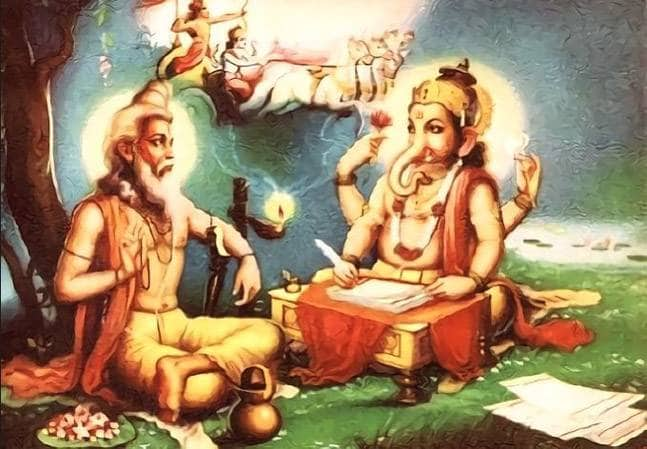The people of India celebrate various festivals in different styles and dates, even though some of these are common for the different believers. India supports multi lingual society, with followers of different faith. From the very early dates of history, it could be seen in India, people lived here having different aptitudes and liking with respect to the one in their near neighborhood.
Celebrating of different types of festivals in India has never caused any conflict but went on with mass happiness. Thus, in a neighborhood, people belonging to Hinduism, Islam, Christianity, Buddhism, Sikh, or Jains, speaking different languages, live together happily. Out of their different festivals, some six are more important and hence recognized throughout India, but celebrated on different dates and in different styles.
Alternative Names for the Six Important Festivals
In the previous article, the six seasons of India was discussed. Now, the readers shall know more about the festivals. The alternative names of the six important festivals of India are:
The main reason for the difference in the methods of celebration is the different dates, which have been derived from different system of calendars. Even though India Government follows a calendar universally recognized, people follow more than one type of calendar and almanacs. The majority Hindu community follows Gregorian calendar, Indian national Shaka Era calendar, and local almanac (Panchanga of local language).
In the Panchanga, there are two types of dates, based on lunar days and solar days. Most of the religious minded people, daily refer the local Panchanga to know about sunrise and sunset timings. Some people are keen about different items of the almanac, like day star (Nakshatra), Vara (day name), thithi of the day (lunar day), Karana (half of thithi, particular to full moon and no moon days). Panchanga thus means five items of the almanac.
1. Guests’ Day
॥ श्री गणेशाय नमः ॥
In India, following lunar calendar, in the Bhadrapada month, Shukla paksha, fourth thithi (Chaturthi), Lord Ganesha is worshipped. We expect good guests but never obstacles on the execution of any desired tasks. All of us pray for the successful completion of our endeavor. The Ganesha idol is worshipped in the beginning of any good works. On this above said day, not only in India, but everywhere in this universe, Lord Ganesha is worshipped. This lord is famous for food. In the eating field, no one can compete with him.
People invite their friends and family relatives and offer the sweet prasadam of Lord Ganesha after puja. The benefits of his puja and the glorious methods of various types of worshipping him itself is a separate chapter. On this day, people propose a guest for their home to be attended on the next festival day.
2. Rulers’ New Year Day
This festival is usually known as Ugadi day. The lunar calendar starts from this day. This is also called as Chandramana Ugadi. Some people celebrate Ugadi on April 14, and it is called Souramana Ugadi. This day is nearest to equinox day, and hence, is also called as Vishu. There are two equinox days, on March 21st (Vasantha-Vishuvam) and on September 22nd (Sharad-Vishuvam). In olden times, equinox and Ugadi days were coinciding but now due to ayanamsha changes by way of the speed of planets, these three days differed apart. People do not have any value to the equinox days, but on Ugadi festival days, go to Temple and they respect elders, seeking blessings.
Sun is the ruler of the day and moon is the ruler of the night. But in Kerala, some people only value solar Ugadi day. The good old ruler of Kerala, the king Maveli is memorized on Thiruvonam day and this ruler’s New Year day is celebrated during the Onam festival days. This is a special cultural event. In north Kerala, April 14th is also celebrated where as in the south (Kollam side), the New Year begins on the Simha samkrama day of the Kerala almanac. In Christianity, New Year day is January 1st and the State also follows this. On lunar Ugadi day, Neem leaves (sour in taste) and sugarcane (sweet) are distributed signifying that life is to be faced with grievances and happiness equally, anticipating in the forthcoming days. It is the “Bhagavatha” message also in Geetha:
दुःखेष्वनुद्विग्नमनाः सुखेशु विगतस्पृहः । वीतराग भयक्रोधः स्त्थितधीर्मुनिरुच्यते ॥
3. Teachers’ Day
Usually September 5th is celebrated as Teachers day. This day in the year 1988, coincided with the starting day of Chaturmasya Vratam of Jain monks. As per prevailing customs, on this same day of the year 1988, the Vyasa Peetha (The holy book stand) is worshipped and the holy people observe fast and lead pious life for next few months.
On this same date, late Dr. Sarvepalli Radhakrishnan, a great teacher of Indian philosophy was born. He rendered his services in USA as professor of philosophy and after returning to India, he became the President of India. One day, his students and friends desired to celebrate his birthday. But he did not agree first, saying it is not a fashion in India. On requesting again, appreciating Vyasa Maharshi, as the great Indian teacher and philosopher, the holy book stand (Vyasa Peetha) upholding the significance of his great contribution to Indian philosophy, later agreed to worship it on his birth day. He celebrated worshipping Vyasa Peetha, with holy philosophical books on September 5th as his own teacher’s day, worshipping Vyasa Maharshi, called as Gurupuja.
In India, great seers are still continuing the annual festival by worshipping of Vyasa Peetha. Guru Puja is conducted by various followers of various schools of thought on various dates but strictly according to their code of conduct of rules of their almanac. Generally, it is a Gurupurnima day, a full moon day in lunar calendar and in some years the final Chaturmasya Vratam closing ceremony called Vrata Visarjana coincide the date as September 5th, the universally known Teachers day.
व्यासाय विष्णु रूपाय व्यास रूपाय विष्णवे । नमो वै भ्रह्मनिधये वासिष्ठाय नमो नमः ॥
4. Mother’s Day
On Ashwina month, shukla paksha tenth day (dashami thithi), Vijaya Dashami is celebrated in India. On this day, the initial letters are administered to the small children called Vidyarambha. In a holy place, rice is poured onto a plate and made leveled and with the child’s fingers, the letters “Amma” meaning mother is written and the child may feel happy in repeating and saying it. This day happens after Navaratri nine days. All through these nine days, mothers of nine natures are worshipped. On this day, the Goddess of Education is escalated. School children keep books for worship for three days and on this day, open it and read it to have blessing of Goddess of knowledge.
5. Father’s Day
On Magha month, Krishna paksha chaturdashi (fourtheenth day), Shivaratri is celebrated. It is celebrated by people, as Lord Shiva is the father of this universe. Water is poured on the Shivalinga. In the day time, fast is observed. In the night Bilva patra leaves are put on the Shiva linga with chanting one thousand names of Lord Shiva. If one could not recite the thousand names, he can repeatedly say the same following manthra thousand times:
॥ नमः शिवाय ॥
People of different faith are free to celebrate father’s day in a different day also. When parents are alive, it is more beneficial to serve them to their satisfaction and the blessings are really wonderful.
6. Children’s Day
Lord Krishna one day granted a parijatha flower to Goddess Radha. Some trick has been plotted by Narada Muni. Krishna understood it and in order to satisfy his other wife Satya Bhama, he offered that he would one day show the tree bearing the flower parijatha. When time passed, he had been conditioned to accompany Satya Bhama to the battle field of Narakasura, a demon. In the war, Krishna pretended as if he lost the war and failed. Immediately, Satya Bhama took the bow, aimed at Narakasura and killed him. Lord Krishna treated him as son and assured to the whole world that the day of death of Narakasura would be celebrated as children’s day. It was Krishna paksha chaturdashi, just prior to Diwali days.
In the year 1889, November 14th, the same day occurred. On the same day, Pandit Jawaharlal Nehru was born and scholars from Kashmir visited to house and predicted November 14th would be celebrated every year as children’s day. Due to solar and lunar calendar’s difference, later, Diwali dates and Children’s day could not coincide every year and hence is celebrated on different days.
Festivals are celebrated either by observing fast or by eating more delicious food after offering to God as prasada, desiring blessings from God.
The Indian Vedic directions in celebrating the festivals are:
Mother is God ॥ मातृ देवो भव ॥
Father is God ॥ पितृ देवो भव ॥
Teacher is God ॥ आचार्य देवो भव ॥
Guest is God ॥ अतिथि देवो भव ॥

Readers may freely forward this article link and share this to friends and family.

0 Comments
3 Pingbacks